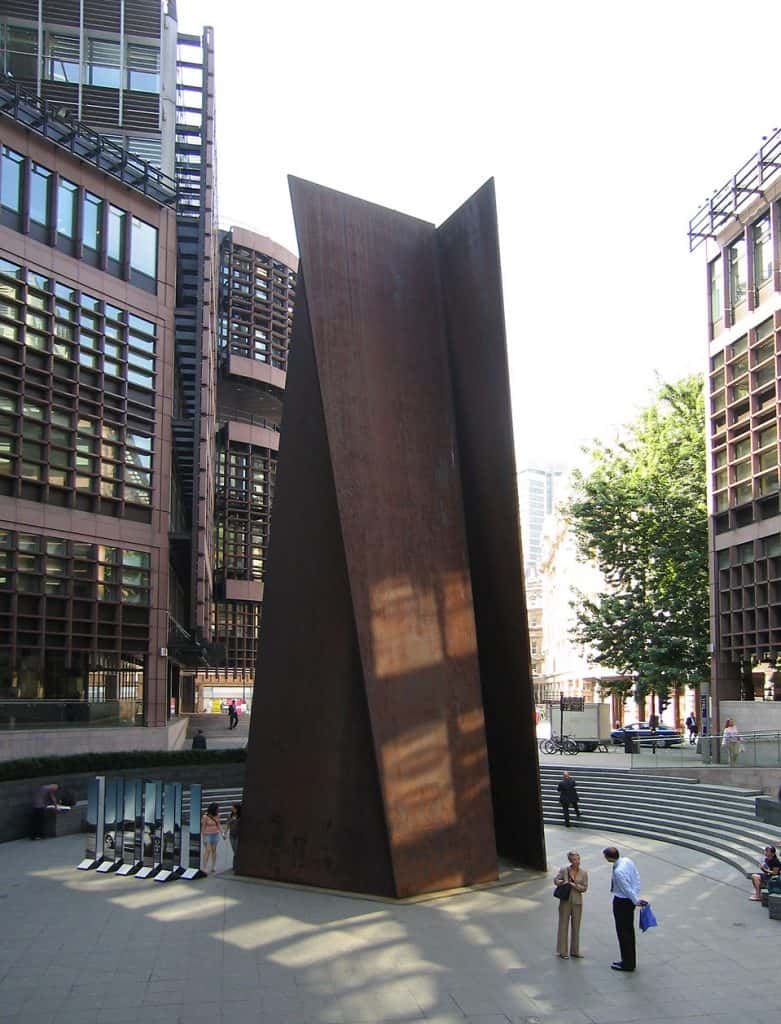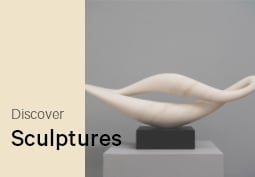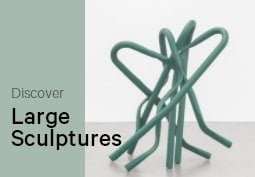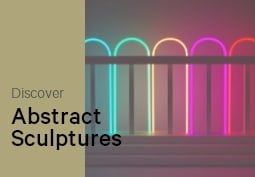Articles and Features
Richard Serra: The Poet of Iron

By Shira Wolfe
“I consider space to be a material. The articulation of space has come to take precedence over other concerns. I attempt to use sculptural form to make space distinct.”
Richard Serra
The iconic American sculptor Richard Serra (1938-2024), known for his monumental steel sculptural work that earned him the nickname of “the poet of iron” among fellow artists, passed away earlier this spring on March 26, 2024, at the age of 85. We feature his consistently awe-inspiring sculptures, a lifetime of work that invites one to reconsider and reimagine one’s relationship to space.
“It took me years to figure out, but finally I got to the point where I started constructing with the void first, and the material just became the container for the void.“
Richard Serra
Richard Serra: Becoming a Sculptor
Born in San Francisco in 1938, Richard Serra grew up observing the shipyards where his father worked. This was to have a profound influence on his development as an artist. Recalling a memory from the shipyards when he was four years old, Serra described how he saw a ship transforming from this vast, heavy thing to a floating structure. “All the raw material that I needed is contained in the reserve of this memory,” he explained.
During his studies in English Literature at UC Berkeley, and later UC Santa Barbara, Serra worked in steel mills to support himself through college. Again, this close encounter with the industrial application of steel and large-scale building work would contribute to his artistic practice. Serra continued on to study painting at Yale University, where he received a BFA and MFA, worked with Josef Albers, and met other established artists such as Philip Guston, Robert Rauschenberg, Ad Reinhardt, and Frank Stella. Following his graduation from Yale, a travel fellowship took him to Paris for a year. The most significant encounters in Paris for Serra were with Philip Glass, who would become a collaborator and life-long friend, and Constantin Brancusi, whose studio he visited nearly every day. Other than Brancusi, Giacometti, also living in Paris at the time, was the most influential figure for Serra, inspiring him to see the many possibilities of dealing with space in new ways.
Serra began creating his first sculptures using non-traditional materials (like fiberglass and rubber) in 1966, and from 1968 to 1970, he created his series of Splash pieces — molten lead splashed into the separations between floors and walls. His Prop pieces, starting in 1969, were experiments in gravity: the parts were not welded together or attached, but only balanced using weight and gravity.
Introducing “Process” and Negative Space
In the 1960s, Serra started to introduce “process” into his sculptural work, making the production process more explicit for audiences. Wishing to examine space in relation to time and movement, he removed sculpture from the pedestal and brought it closer to people, to ask the question: What can form do in relation to space and movement?
In his later career, Serra focused his art around elliptical forms, with steel surfaces changing color and texture when exposed to the elements. These are site-specific works on a monumental scale, boldly calling our attention to negative space. Influenced in part by Zen Buddhism and Zen gardens in Japan, Serra began constructing sculptural works in which void came first. He explained once: “It took me years to figure out, but finally I got to the point where I started constructing with the void first, and the material just became the container for the void.”
Famous Works by Richard Serra
Gutter Corner Splash: Night Shift, 1969/1995
Serra first created Gutter Corner Splash in Jasper Johns’ New York studio. In 1995, he recreated it and added Night Shift to the title, since he and his assistants worked through the night to complete the work. After each layer of lead (which came from recycled foil from Champagne bottles) dried, Serra and his assistants pried it away, inverted it on the floor, and as such created the lead forms. The work was one of Serra’s first critiques of the static and elevated concept of sculpture.
One Ton Prop (House of Cards), 1969
In 1969, Serra created One Ton Prop (House of Cards), made from four lead plates leaning against each other like a house of cards, unfixed, using balance, gravity, and their own weight to remain in place.
Tilted Arc, 1981-89
One of the most controversial works of Serra’s career is Tilted Arc, a 3.5-meter high site-specific arc made of curved steel installed in the Federal Building Plaza in New York City. Workers in the buildings around the plaza complained that the sculpture obstructed their accessibility through the space, and it was moved in 1989. According to Serra, “To remove the work is to destroy it.”

Fulcrum, 1987
Fulcrum was commissioned for London’s busy Broadgate pedestrian area, and given the restrictions in space, Serra decided to design upwards. The sculpture measures 16,8 meters in height, and comprises five trapezoidal plates of weatherproof steel, leaning against each other to create a sculpture that completely supports itself.
Snake, 1994-97
Created for its inauguration, and permanently located in the Guggenheim Museum Bilbao, Serra’s sculpture Snake consists of three sinuous steel sheets which create a curving path. Serra intended the artwork to be experienced through its negative spaces.
Torqued Ellipse series, 1996 onwards
The Torqued Ellipse series is unquestionably among Serra’s most iconic works. He started working on them in 1996, inspired by the space in the 17th-century baroque church San Carlo Alle Quattro Fontane in Rome. Huge steel plates bend into open, circular sculptures, rotating upward and leaning in various directions. Serra himself said of the works:
“I realized that there wasn’t a large vocabulary of building with curvilinear forms, particularly in a city that’s made up of right angles. The only curvature building I can think of any note in the city at that time was Frank Lloyd Wright’s Guggenheim Museum. And I wanted to build something that would inform my experience. If you walk around the curve, you don’t know how it’s going to round. It seems continuous and never-ending. But the concave side like a cave, reveals itself in its entirety. You know what the form is.”
Relevant sources to learn more
More articles from Artland Magazine you may like:
Female Iconoclasts: Beverly Pepper
Per Kirkeby’s Sculptures
The sculptural forms of Katarzyna Kobro
Other relevant sources:
Guggenheim
Dia:Beacon
MoMA



